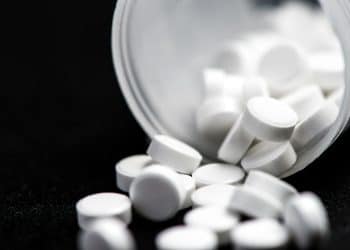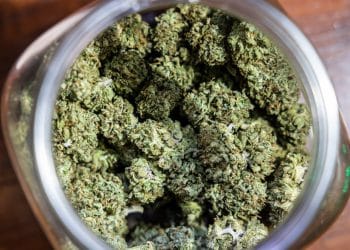By 2024, the cannabidiol (CBD) market could reach $20 billion in sales. Companies are introducing new products to the market every day, ranging from edibles and cosmetics to food and beverages.
That’s right: more people are drinking their daily dose of CBD.
CBD-infused water benefits your skin, immunity, heart, and more. Still, many people are on the fence about using CBD-infused water instead of other products.
Keep reading to discover the benefits of CBD-infused water as well as the truth behind this product’s capabilities. As you learn more, you might realize it’s the product you need—or decide it’s time to explore other options.
What Is CBD Water?
Before we dive into how CBD-infused water benefits the mind and body, let’s answer the question, “What is CBD water?” first.
CBD is a chemical compound found in Cannabis sativa plants. Unlike delta-9-tetrahydrocannabnol (THC), CBD is not an intoxicating element. That means it won’t make you high the way THC does.
Like THC, CBD offers a range of medicinal properties. CBD has been put into oils, gummies, capsules, lotions, and many other edible and topical matrices. CBD-infused water, on the other hand, is made by reducing the sizes of CBD particles until they have the appearance of being soluble in aqueous solutions. This can be done using methods like nanoemulsification or glycosylation.
Drinking CBD provides a way to maximize health benefits through greater bioavailability. What benefits?
The Endocannabinoid System
Many creatures have an endocannabinoid system (ECS). This system is responsible for regulating essential functions, such as:
- Pain [1]
- Appetite
- Sleep [2]
- Immunity [3]
Your body naturally produces neurotransmitters called endocannabinoids. These and phytocannabinoids interact with cannabinoid receptors through your nervous system. Using CBD, you can slow endocannabinoid receptor activity to reduce certain responses.
- Pain and Inflammation
For example, CBD can potentially reduce inflammation. Unfortunately, ongoing inflammation can lead to:
- Obesity [4]
- Cancer [5]
- Asthma [6]
- Arthritis [7]
- Type 2 diabetes [8]
- Heart disease [9]
- Neurodegenerative diseases [10]
Some people use CBD to reduce inflammation and sciatic nerve pain. While using CBD for pain relief is common, it’s only the beginning. CBD has successfully helped rats with arthritis pain. [7] Too much inflammation can cause rheumatoid arthritis to develop. According to the study, inflammation and signs of pain decreased after CBD was administered.
However, clinical studies are needed to determine CBD’s full effect on the human body.
- Multiple Sclerosis
Multiple sclerosis (MS) is an autoimmune disease that acts on nerves and the brain. Many MS patients experience muscle spasms as a result of their condition.
CBD-infused water might benefit MS patients. In fact, a CBD and THC-based oral spray called Sativex was designed for patients with MS. It’s shown promising results in reducing levels of spasticity for patients while reducing symptoms. For example, 75% of the patients in a Sativex clinical study experienced reduced spasms after using Sativex. [11]
- Better Skin
Several external and internal elements can cause skin problems. For example, UV rays can cause our skin to age prematurely. Our diet can also cause acne flare-ups and redness. Acne is caused by genetics, inflammation, sebum production, and bacteria.
Some people have seen positive results after using CBD to treat skin concerns. [12] CBD has anti-acne agents that target sebum production, inflammation, and proliferation—all contributors to acne production. [13] Inflammation can cause an increase in sebum production, a natural oil that causes acne as well.
- Anxiety and Depression
Anxiety and depression are the leading causes of disability worldwide. [14] Both can impact a person’s mental and physical health. Left untreated, depression can lead to suicide.
The pharmaceutical drugs some doctors prescribe for treatment can cause a number of side effects, including:
- Agitation
- Insomnia
- Sexual dysfunction
- Headaches
- Drowsiness
- Addiction and substance abuse
CBD can help some patients relieve their anxiety and depression symptoms by acting on a neurotransmitter called serotonin. Serotonin regulates our mood, which can help ease anxiety and depression symptoms.
- Protection and Prevention
Using CBD can also help prevent diabetes and offer neuroprotection. Blood glucose levels and inflammation contribute to diabetes. As discussed above, using CBD can help reduce excess inflammation, which might reduce your risk of diabetes. Inflammation also impacts the body’s insulin resistance and lowers blood sugar levels.
CBD’s antipsychotic effects are also beneficial for patients with psychotic symptoms. [15] It’s thought that CBD can help patients with epilepsy and schizophrenia [16] by decreasing the inflammation that causes cognitive decline.
CBD’s anti-inflammatory property might help treat Alzheimer’s disease and other neurological health conditions. [17] However, additional research is necessary to learn more.
- Heart Health
As we age, our chances of developing a heart condition increases. Thankfully, CBD presents stress- and anxiety-reducing properties. CBD-infused water might benefit the heart and circulatory system by lowering high blood pressure levels. A high blood pressure level could cause a heart attack, stroke, or metabolic syndrome.
CBD contains stress- and anxiety-reducing properties. [18] These properties might help lower your blood pressure, which would reduce your chances of developing heart disease.
- Sleep Aid
Remember, CBD interacts with the endocannabinoid system which regulates sleep. Without enough sleep, your cortisol levels will increase, leading to:
- Lower energy levels
- Weight gain
- Diabetes
Some people use CBD to help them relax and get the sleep they need.
The Truth
These CBD-infused water benefits sound great, but it’s time to learn the truth. Some brands of CBD-infused water contain very little CBD. The low CBD content (e.g. two mg per bottle) would make it more difficult for you to experience these benefits.
Some companies explain the low CBD product by claiming they use nanotechnology to decrease particle size. While using nanoparticles might increase your body’s ability to absorb [19] and use CBD, more research is necessary.
The price tag is also a problem, as CBD-infused water is more expensive per milligram of CBD than other products. Meanwhile, CBD degrades when it’s exposed to light. While CBD-infused water benefits your mind and body, it helps to consider the truth first. The small amounts of CBD in some products might not help you specifically as much as a CBD oil or tincture. With products made from Cannabis sativa, it’s all about the individual.
References
- Woodhams, S. et al. “The Role of the Endocannabinoid System in Pain,” Handb Exp Pharmacol., vol. 227, 2015, pp. 119-43. [journal impact factor = 15.550; timed cited 35 (SemanticScholar)]
- Babson, K. and Bonn-Miller, M. “Sleep Disturbances: Implications for Cannabis Use, Cannabis Use Cessation, and Cannabis Use Treatment,” Curr Addict Rep, vol. 1, 2014, pp. 109–114. [journal impact factor = n/a; timed cited 9 (SemanticScholar)]
- Pacher, P. and Kunos, G. “Modulating the Endocannabinoid System in Human Health and Disease: Successes and Failures,” FEBS J., vol. 280, no. 9, 2013, pp. 1918–1943. [journal impact factor = 4.739; timed cited 148 (SemanticScholar)]
- Matias, I. et al. “Obesity and the Endocannabinoid System: Circulating Endocannabinoids and Obesity,” Current Obesity Reports, vol. 1, 2012, pp. 229–235. [journal impact factor = 3.454; timed cited 5 (SemanticScholar)]
- Khan, M. et al. “The Therapeutic Aspects of the Endocannabinoid System (ECS) for Cancer and their Development: From Nature to Laboratory,” Curr Pharm Des., vol. 22, no. 12, 2016, pp. 1756–1766. [journal impact factor = 2.412; timed cited 8 (SemanticScholar)]
- Vuolo, F. et al. “Cannabidiol Reduces Airway Inflammation and Fibrosis in Experimental Allergic Asthma,” Eur J Pharmacol., vol. 843, 2019, pp. 251-259. [journal impact factor = 3.170; timed cited 2 (SemanticScholar)]
- Hammell, D. et al. “Transdermal Cannabidiol Reduces Inflammation and Pain-Related Behaviours in a Rat Model of Arthritis,” Eur J Pain., vol. 20, no. 6, 2016, pp. 936–948. [journal impact factor = 3.188; timed cited 26 (SemanticScholar)]
- Gruden, G. et al. “Role of the Endocannabinoid System in Diabetes and Diabetic Complications,” Br J Pharmacol., vol. 173, no. 7, 2016, pp. 1116–1127. [journal impact factor = 6.583; timed cited 30 (SemanticScholar)]
- Fulmer, M. and Thewke, D. “The Endocannabinoid System and Heart Disease: The Role of Cannabinoid Receptor Type 2,” Cardiovasc Hematol Disord Drug Targets, vol. 18, no. 1, 2018, pp. 34–51. [journal impact factor = n/a; timed cited 3 (GoogleScholar)]
- Basavarajappa, B. et al. “Endocannabinoid System in Neurodegenerative Disorders,” J Neurochem., vol. 142, no. 5, 2017, pp. 624–648. [journal impact factor = 4.87; timed cited 19 (SemanticScholar)]
- Flachenecker, P. et al. “Nabiximols (THC/CBD Oromucosal Spray, Sativex®) in Clinical Practice–Results of a Multicenter, Non-Interventional Study (MOVE 2) in Patients with Multiple Sclerosis Spasticity,” Eur Neurol., vol. 71 no. 5-6, 2014, pp. 271-9. [journal impact factor = 1.235; timed cited 53 (SemanticScholar)]
- Palmieri, B. et al. “A Therapeutic Effect of CBD-Enriched Ointment in Inflammatory Skin Diseases and Cutaneous Scars,” Clin Ter., vol. 170, no. 2, 2019, pp. e93-e99. [journal impact factor = n/a; timed cited 2 (SemanticScholar)]
- Oláh, A. et al. “Cannabidiol Exerts Sebostatic and Anti-inflammatory Effects on Human Sebocytes,” J Clin Invest., vol. 124, no. 9, 2014, pp. 3713-3724. [journal impact factor = 12.282; timed cited 47 (SemanticScholar)]
- Friedrich, M. “Depression is the Leading Cause of Disability Around the World,” JAMA, vol. 317, no. 15, 2017, pp. 517. [journal impact factor = 51.273; timed cited 74 (SemanticScholar)]
- O’Neill, A. et al. “Normalization of Mediotemporal and Prefrontal Activity, and Mediotemporal-Striatal Connectivity, May Underlie Antipsychotic Effects of Cannabidiol in Psychosis,” Psychological Medicine, 2020, pp. 1-11. [journal impact factor = 5.641; timed cited 1 (ResearchGate)]
- Davies, C. and Bhattacharyya, S. “Cannabidiol as a Potential Treatment for Psychosis,” Ther Adv Psychopharmacol, vol. 9, 2019, pp. 1–16. [journal impact factor = 3.000; timed cited 17 (SemanticScholar)]
- Cheng, D. et al. “Long-Term Cannabidiol Treatment Prevents the Development of Social Recognition Memory Deficits in Alzheimer’s Disease Transgenic Mice,” J Alzheimers Dis., vol. 42, no. 4, 2014, pp. 1383-96. [journal impact factor = 3.517; timed cited 35 (SemanticScholar)]
- Cuttler, C. et al. “A Naturalistic Examination of the Perceived Effects of Cannabis on Negative Affect,” Journal of Affective Disorders, vol. 235, 2018, pp. 198-205. [journal impact factor = 4.084; timed cited 5 (SemanticScholar)]
- Durán-Lobato M. et al. “Lipid Nanoparticles as an Emerging Platform for Cannabinoid Delivery: Physicochemical Optimization and Biocompatibility,” Drug Dev Ind Pharm., vol. 42, no. 2, 2016, pp. 190-8. [journal impact factor = 2.367; timed cited 6 (SemanticScholar)]












